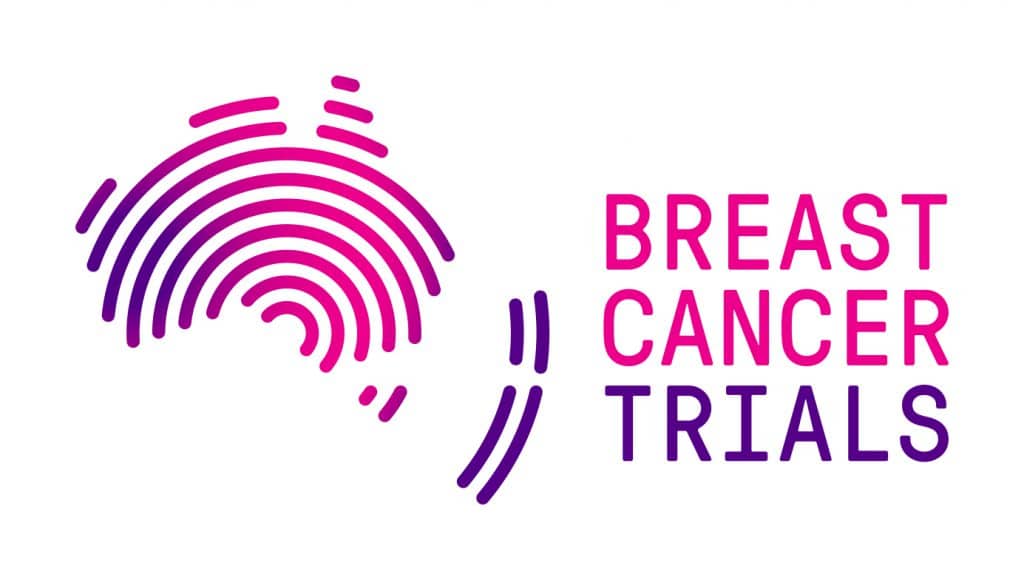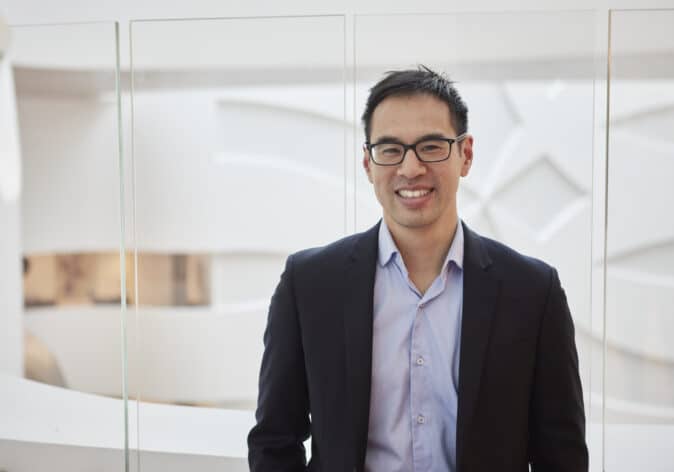Why Less Can Be More
The last 40 years have seen breast cancer treatment come a long way. It’s quite likely that our mothers and grandmothers were treated with the Halsted – or radical – Mastectomy which involved the removal of the entire breast, the skin and underlying muscle, as well as the lymph glands.
Professor Bruce Mann’s clinical trials research is looking for ways to safely de-escalate treatment for breast cancer patients.
“I think patients are probably unaware of the whole ethical background that clinical trials are designed with. Patient safety is very much top of mind.
“Most trials that have happened in medical oncology with drugs have been about so-called ‘standard treatment’, or the current best treatment vs the current treatment plus something else.
“A patient will say, ‘I want the best’, and in medical oncology we can present what is currently known to be the best available treatment. We know it’s imperfect so a clinical trial will compare a new idea, a new treatment, that we believe may be better than the current best treatment. That becomes the clinical trial.
“Clinical trials in breast cancer surgery have been quite different to that. A lot of the research has been about doing less surgery rather than current standard treatment – so-called ‘de-escalation trials’.
“The first breast cancer surgery clinical trials compared a radical mastectomy – which involved removing all breast tissue and the underlying muscle, with a total mastectomy – which meant leaving the muscle intact. The trials showed there was no difference, so the total mastectomy became the standard treatment.”
Picture: Dr William S Halsted pictured in 1902. Halsted is considered a pioneer of the radical mastectomy, blood transfusions, and sterile operating rooms and techniques. Johns Hopkins Medicine.
“Then there was total mastectomy vs breast conservation surgery – not removing the whole breast but taking the tumour out and giving the patient radiation. Again, this showed no difference, so the breast conserving treatment became standard.
“With the lymph nodes, the standard was to remove them all. It was thought this was essential, but the new procedure of sentinel node biopsy showed that just identifying the key lymph node and leaving the others if the key lymph node is not involved showed that was just as safe. That’s another example of de-escalation. “
Examples of De-Escalation Clinical Trials
A number of Breast Cancer Trials current clinical trials are investigating safe de-escalation including EXPERT, POSNOC and PROSPECT.
“My experience is that patients undoubtedly want to be cured – that’s their number one concern. But their second concern is can they be cured with less treatment? If so, that’s even better. So there is an appetite for de-escalation trials.
“Clinical trials have been through the ethics process and been judged independently to be safe. It could be that one of these trials will show that we have de-escalated as far as we can and that by reducing the extent of treatment there may be more recurrences. That would be an outcome.”
“My experience is, however, that most patients are very receptive to the idea of de-escalation. Some people still won’t feel comfortable to participate, but most people are.”
“We haven’t yet got to the stage of ‘no surgery’, of leaving the cancer there and just using drugs. That may be the case in some types of breast cancer in the future.”
How Far Breast Surgery Has Come
“Clinical trials have clearly shown that breast conservation surgery, ie avoiding mastectomy, is safe. When I mention that, the immediate reaction of a lot of patients and couples is, “No, no – take it (the whole breast) off!” The assumption is that somehow more treatment is better; if it doesn’t hurt it can’t be good – but it’s simply not true. We know that breast conservation is at least as safe as mastectomy. Once someone understands that, the reaction for most people is that are very happy to avoid a treatment if they can safely do so, and that’s one of the roles of rigorous clinical trials of de-escalation – to provide the evidence that people can safely avoid a treatment.”
“It’s hard because when it’s a trial where the proposition to the patient is that we believe this less intense treatment will give just as good a cancer outcome as the current standard treatment with reduced side effects, some people say, “OK, but I’ll just have the standard treatment thanks”. That’s OK, but some people will agree to take part in the clinical trial.”
“Sometimes what happens is that people reflect that the only reason we’re not doing the Halsted radical mastectomy is that generations of patients have taken part in successive de-escalation studies that have brought us to here and if we are to identify the minimal effective treatment, we do need to do more de-escalation studies.”
“Indeed the Edwin Smith Papyrus, an ancient Egyptian medical text, contains the earliest medical writings in existence. There is one which clearly talks about breast cancer and, to para-phrase it, the ancient medico says, “This is a condition that I treat with the fire-stick” – presumably an ancient form of cautery to stop bleeding – but later on also says, “This is a condition that can’t be treated”.
“We’ve come a very long way.”
Support Us
Help us to change lives through breast cancer clinical trials research




